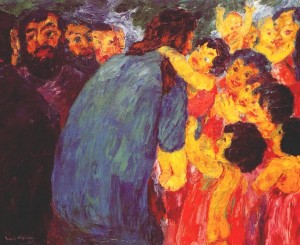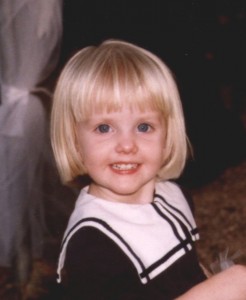For every beginning, there is an ending and for every ending there is a new beginning. That seems to be the way things go in Ecclesiastes, the Godly Play lesson “The Circle of the Church Year” and, well, life. The golden thread of time seems to be spiraled around and around, much more than time in a line.
The girls are just counting the days until school ends and vacation begins. Here in Texas, spring has clearly ended and the heat of summer has begun. As May comes to an end, so too will my time as Child & Family Minister at St. Martin’s, and I will start a new beginning.
Today, in the last Godly Play session with the 4-year-old preschoolers, one asked, “So is this the last story ever?” Honestly and happily, I could reply, “No.” I went on to say, “Now this circle of people won’t be together again in this place to hear stories. But, God’s story simply doesn’t end. It goes on forever. And we are a part that hasn’t been written yet. But that is another story…”
The story for preschoolers this week is the Parable of the Deep Well. It is a Godly Play lesson with its roots in the Midrash Rabbah tradition. The parable tells of a very deep well in the middle of the desert. Most passer-bys have forgotten how to draw water from it altogether. One person comes along and takes his time. He looks around and sees the golden ropes strewn about and an old bucket. He ties them altogether and slowly draws out the life-giving water. When I wondered who this person might be, the children replied “God”, “Jesus”, “Mary.” I don’t know. Someone who takes time.
So heeding this lesson, this summer I will take a little time to slow down and get ready. In June, I will attend my final classes working toward a Certificate in the Spiritual Guidance of Children from General Theological Seminary. In September, I will begin working toward a Master of Divinity degree from Austin Presbyterian Theological Seminary while on a hope-filled path to become a pastor in the Evangelical Lutheran Church in America (yes, you did see three denominations in two sentences).
A couple of weeks ago, I was gathered with a group of children near the altar in the middle of worship at children’s story time. In the middle of my story, a 2nd grade boy said out-loud, “You are becoming a pastor!” Now granted, the news had just been announced, so his mom probably told him. But the way he said it, gave me goosebumps. I wish it was that clear and obvious, that process of “becoming”!
So thus ends the newest beginning, the first post in my new blog site! Bookmark me. I promise to write down the part that is not yet written.

